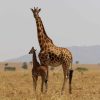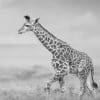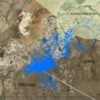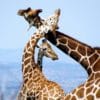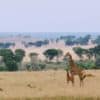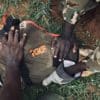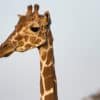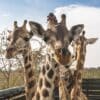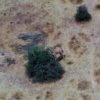In 2016 the IUCN completed the first detailed assessment of the conservation status of giraffe, revealing that their numbers are in peril. This was further emphasised when the majority of the IUCN recognised subspecies were assessed in 2018 – some as Critically Endangered. While this update further confirms the real threat to one of Africa’s most charismatic megafauna, it also highlights a rather confusing aspect of giraffe conservation: how many species/subspecies of giraffe are there?
The IUCN currently recognises one species (Giraffa camelopardalis) and nine subspecies of giraffe, which is historically based on outdated assessments of their morphological features and geographic ranges. The subspecies are thus divided: Angolan giraffe (G. c. angolensis), Kordofan giraffe (G. c. antiquorum), Masai giraffe (G. c. tippleskirchi), Nubian giraffe (G. c. camelopardalis), Reticulated giraffe (G. c. reticulata), Rothschild’s giraffe (G. c. rothschildi), South African giraffe (G. c. giraffa), Thornicroft’s giraffe (G. c. thornicrofti), and West African giraffe (G. c. peralta).
However, the Giraffe Conservation Foundation (GCF), together with its partner Senckenberg Biodiversity and Climate Research Centre (BiK-F), has performed the first-ever comprehensive DNA sampling and analysis (genomic, nuclear and mitochondrial) of all major natural populations of giraffe throughout their range in Africa. As a result, an update of the traditional taxonomy now exists. This study revealed that there are four distinct species of giraffe, and several subspecies. The four distinct species are Masai giraffe (G. tippelskirchi), Northern giraffe (G. camelopardalis), Reticulated giraffe (G. reticulata) and Southern giraffe (G. giraffa). The Angolan giraffe (G. g. angolensis) and South African giraffe (G. g. giraffa) are the two subspecies of the Southern giraffe. The Luangwa giraffe (also known as Thornicroft’s giraffe, G. t. thornicrofti) and Masai giraffe (G. t. tippelskirchi) are both subspecies of the Masai giraffe. Nubian giraffe (G. c. camelopardalis), Kordofan giraffe (G. c. antiquorum) and West African giraffe (G. c. peralta) are the three subspecies of the Northern giraffe. Rothschild’s giraffe is genetically identical to the Nubian giraffe. As the nominate species, Nubian giraffe takes precedence and Rothschild’s giraffe is thus subsumed into it.




